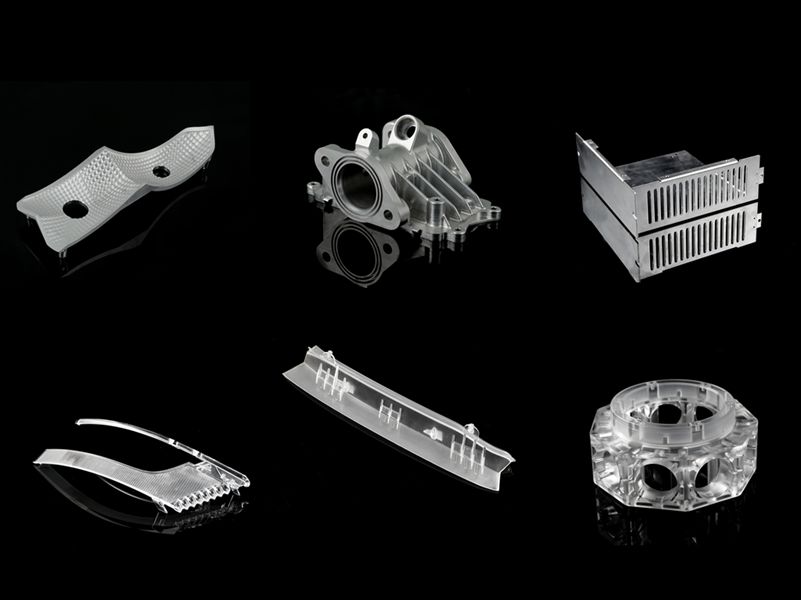A prototype is an early sample, model, or release of a product built to test a concept or process,it is the first step to verify the feasibility of the product, It is the most direct and effective way to find out the defects, shortcomings and disadvantages of the designed product, so as to correct the defects. Targeted improvements are made until no deficiencies can be found in individual prototypes.
At this point, it is usually necessary to conduct a small-scale trial production to find out the shortcomings in the batch for improvement. Designed products generally cannot be perfect or even usable. Once produced directly, all defects will be scrapped, which is a great waste of manpower, material resources and time. Prototypes generally only have a small number of samples, with a short production cycle, low consumption of manpower and material resources, and very high cost. Quickly find out the shortcomings of product design and improve them, providing sufficient basis for product finalization and mass production.

Applications and Prototyping in the CNC Machining Industry
In hardware development, prototypes may include 3D-printed parts, CNC-machined models, or PCBA samples to test form, fit, and function.
In software and web development, prototypes often take the form of clickable UI designs or interactive wireframes. Tools like Figma, Adobe XD, or Sketch are commonly used to simulate the user experience before any code is written.
Prototyping is also essential in industries such as automotive, aerospace, medical devices, and consumer electronics, where precision, safety, and performance must be validated early. Today, we will focus on CNC-machined models to explore how prototyping is applied in the CNC machining industry.
According to production method:
According to the production method, prototypes can be divided into manual prototypes and CNC prototypes:
Handmade Prototype: The majority of the work is done manually.
CNC Prototype: Most of the work is carried out by CNC machines. Depending on the equipment used, prototypes can be quickly produced through laser rapid prototyping or CNC machining centers.
Compared to CNC prototypes, laser rapid prototyping has its own advantages:
The main advantage of laser rapid prototyping lies in its speed. However, since it relies on layer-by-layer accumulation technology, the resulting prototypes are often rough and have certain limitations in terms of product thickness. If the design is too thin, it may not be manufacturable.
CNC prototyping excels in accurately representing the information conveyed in the design drawings. It also offers superior surface quality—especially after surface treatments such as spraying and screen printing, the appearance can be even more striking than that of mass-produced parts. As a result, CNC prototyping has increasingly become the mainstream method in the field of prototype manufacturing.
Brief Introduction of Two Prototyping Methods
1.Laser Rapid Prototyping (SLA/SLS)
Laser rapid prototyping is divided into SLA and SLS based on the materials used.
SLA (Stereolithography) is a process based on the principle of photopolymerization, also known as selective solidification of photosensitive resin. It is one of the earliest rapid prototyping technologies. The process involves filling a tank with liquid photosensitive resin. When exposed to a UV laser beam, the resin quickly solidifies. At the start of forming, the movable platform is positioned slightly below the liquid surface—by the thickness of one cross-sectional layer. Under computer control, the focused laser beam scans the surface according to the required cross-sectional contour, curing the resin in that area to form a resin sheet with the desired profile. Then, the platform is lowered by one layer thickness, and a new layer of liquid resin is spread over the previously cured layer for the next laser scan. The newly cured layer bonds firmly with the previous one. This process repeats until the entire part is completed. Finally, the part undergoes cleaning, support removal, post-curing, and surface finishing.
SLA is suitable for producing small to medium-sized components and can directly yield resin or engineering plastic-like parts. SLA prototypes feature excellent surface quality, high system resolution, and high forming accuracy.
SLS (Selective Laser Sintering) uses a similar method but employs powdered materials instead of liquid photopolymers. The laser scans and sinters the powder at controlled speeds and energies. Key factors affecting quality include laser parameters, powder characteristics, and the sintering environment. SLS can produce the most durable prototypes using a variety of materials such as engineering plastics, wax, metals, and ceramics. Parts can be formed rapidly without the need for post-processing or structural supports.
2.CNC Machining
CNC (Computer Numerical Control) is widely used in the machining industry and is a mature technology. It delivers excellent performance and precision in prototype manufacturing. The first consideration is choosing the appropriate machining method.
Management Practices
For a prototyping company to grow and succeed, it must implement effective management strategies, including the adoption of ISO standards, a highly skilled workforce, and advanced manufacturing technologies.


